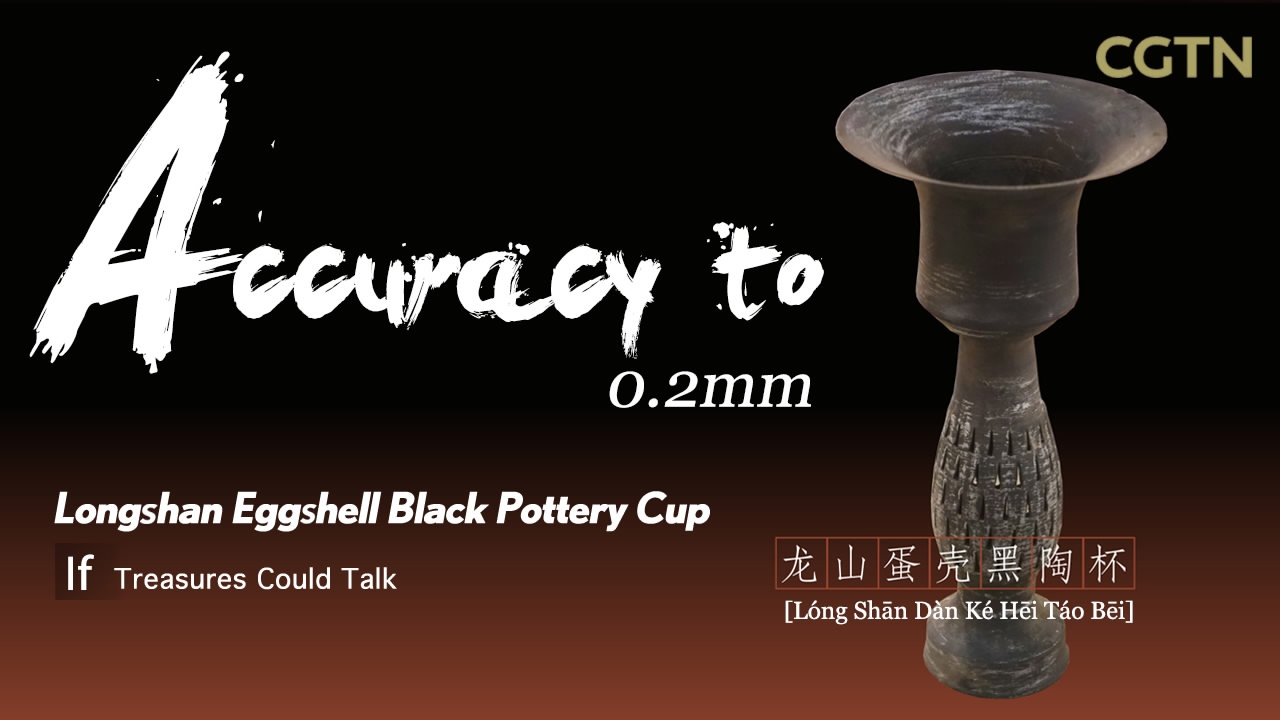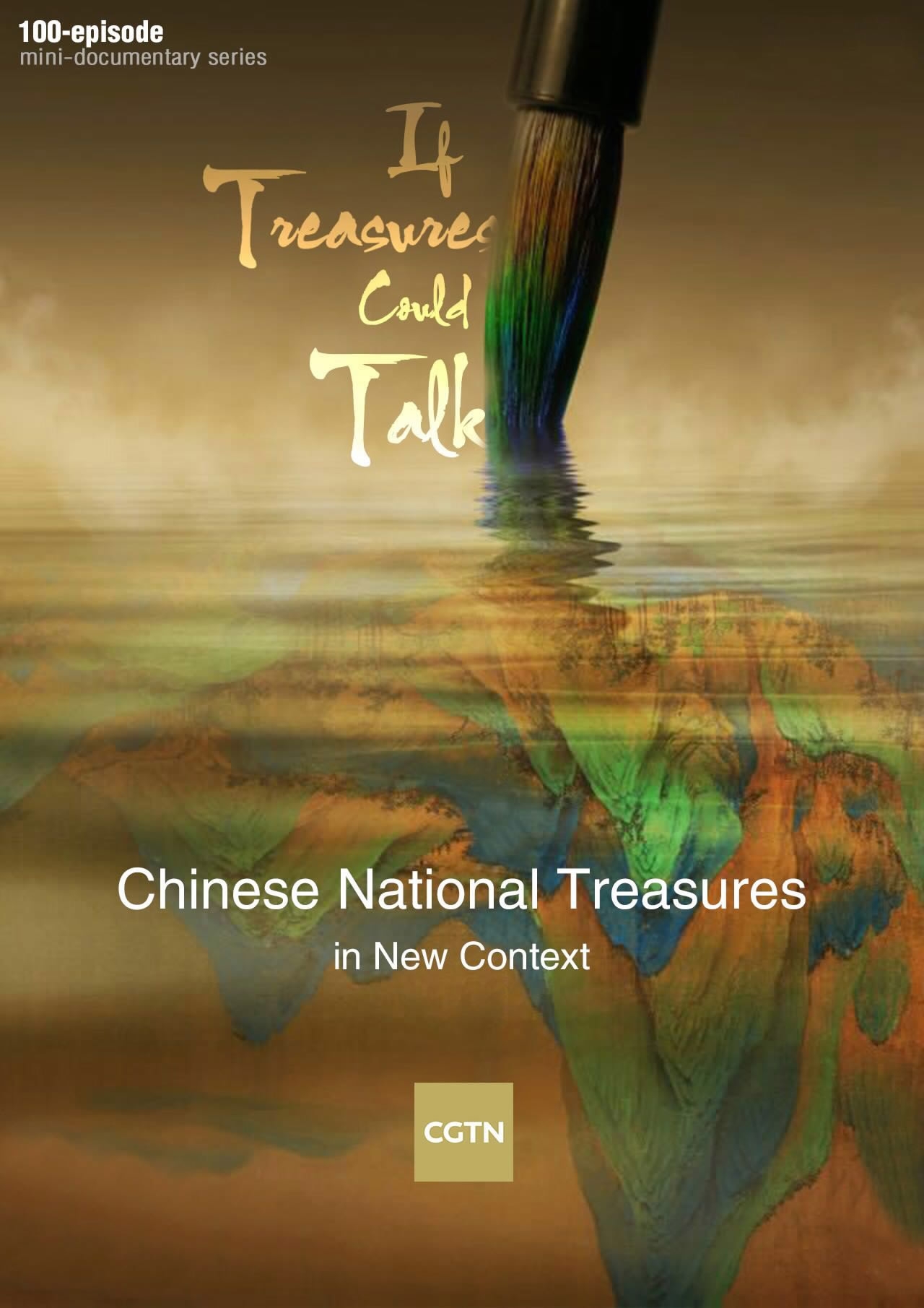
Culture
20:03, 23-Feb-2018
If Treasures Could Talk: What would Longshan Eggshell Black Pottery Cup say?
By Special Feature and Documentary Programming & Culture Express

The fourth episode of CGTN's special series "If Treasures Could Talk" features the Longshan Eggshell Black Pottery Cup, which is accurate to two-tenths of a millimeter. How would you define "thin?" As thin as a cicada's wing? As the edge of a coin? Can one centimeter be considered thin, or one millimeter? Or a fifth of a millimeter?
Four thousand years ago, on the banks of the Yellow River, Longshan Culture brought the most rustic material and the most sophisticated craftsmanship together.
Very few of these thin-sided black pottery cups have ever been unearthed.

Collection of Shandong Provincial Institute of Cultural Relics and Archeology. /VCG Photo
Collection of Shandong Provincial Institute of Cultural Relics and Archeology. /VCG Photo
The rustic sheen of pottery represented the first light of artistic creation for the earliest civilizations. Among the diverse colored earthenware they produced, the black pottery cups from Longshan Culture stand out.
This is perhaps the most exquisite 4,000-year-old work of art in the world.
The international archaeological community has been effusive in its praise for the cup.
Eggshell black pottery cups in various shapes have been found, suggesting that they were not part of a single batch.
The sophisticated manufacturing techniques were unique for their time. Even with the use of modern technology, it's hard to reproduce the extreme thinness of the original.
Pottery this thin will easily shatter on a fast-spinning wheel. Such small vessels place high demands on the wheel's precision and stability.

Collection of National Museum of China. /VCG Photo
Collection of National Museum of China. /VCG Photo
No kiln site associated with the time and place of these vessels’ manufacture has been found, so we do not know what equipment was used, 4,000 years ago.
Eggshell pottery was made from the fine silt deposited in rivers and lakes. Washing it and removing the impurities rendered this basic material strong enough to be made into thin but durable pottery.
The temperature in the kiln and the length of firing determined each vessel's fate.
The ancient potters used a unique sealed firing technique that allowed carbon to infiltrate the pores of the pottery. This produced a completely black surface, which was then glazed.
The mysterious metallic luster inspires a sense of awe. A feeling that, somehow, this ancient vessel deserves our respect.
But why expend such time and resources on creating something so exquisite?
It may be that the eggshell pottery vessels were used in religious rituals. Creating standard practices and utensils to give substance and form to illusory rites always had a strong appeal to the ruling class.
During the Longshan Culture period, along the Yellow River in what is today Shandong Province, pottery production clearly progressed from something random, to something that was strictly organized. This development reveals how society evolved.
If eggshell black pottery cups really did serve as ritual vessels, their fragility would be the reason they were eventually replaced by copperware.

The official poster for "If Treasure Could Talk" series. /CCTV Photo
The official poster for "If Treasure Could Talk" series. /CCTV Photo

SITEMAP
Copyright © 2018 CGTN. Beijing ICP prepared NO.16065310-3
Copyright © 2018 CGTN. Beijing ICP prepared NO.16065310-3